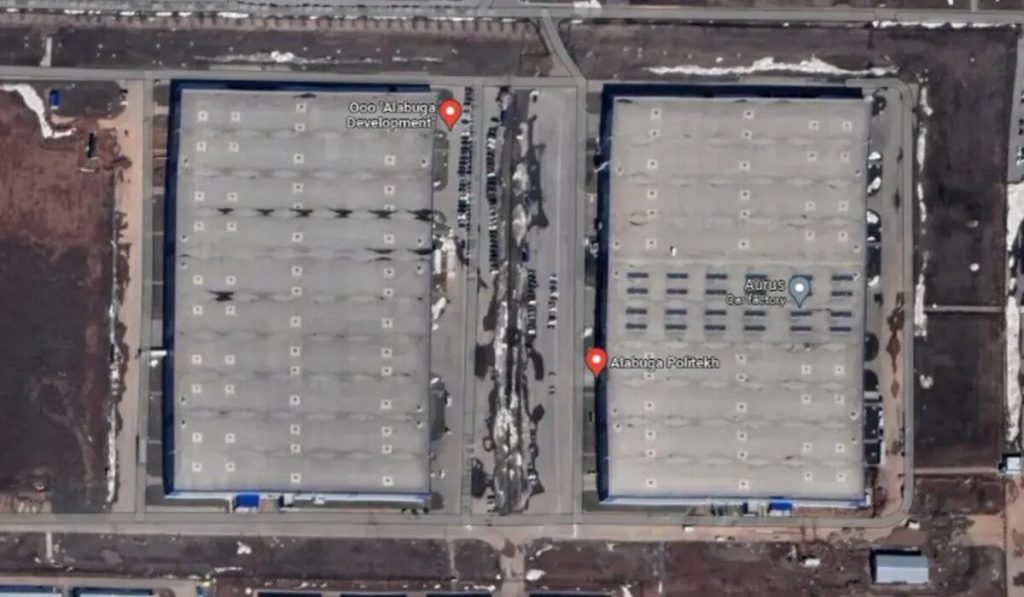In a recent development, a Russian drone factory situated in the Alabuga Special Economic Zone, Republic of Tatarstan, has come under scrutiny due to allegations of utilizing teenagers for the assembly of Geran-2 drones, a counterpart to Iran’s Shahed-136 drone. Various news outlets have shed light on this situation, raising questions about the ethical implications of such labor practices.
The factory, which underwent an extensive renovation costing a substantial $806 million, aimed to achieve an annual production capacity of approximately 2,000 drones. Managed by Alexey Florov, the director of Albatross LLC drone firm, the facility currently assembles 70 Geran-2 drones every month using components supplied by Iran.
What has stirred controversy is the reported involvement of teenagers aged 15 to 17 from the Alabuga Polytechnic College in the drone assembly process. Allegedly, these young workers are subjected to grueling 12-hour shifts and receive a meager compensation of around $350 per month. The factory has been accused of implementing what some describe as a “forced labor scheme,” leading to concerns over the well-being and fair treatment of these adolescent workers.
Despite the ambitious production goals, recent records indicate that the factory has struggled to meet expectations. By August, only around 300 drones had been delivered, falling far short of the projected output.
This situation brings to mind a previous incident where Iranian drones were reportedly developed with the involvement of students from British Universities, adding an international dimension to the debate.
According to reports from Popular Mechanics, the factory management portrays the labor arrangement as a voluntary work-study program. However, allegations have emerged that students who decline participation face expulsion from the program and fines reaching up to $4,200. Students have raised concerns about grueling work schedules, a seven-day workweek, and limited access to proper sustenance.
Moreover, reports suggest that student expulsions are tied to both performance metrics and participation in activities like patriotic paintball games. Shockingly, claims have surfaced that young girls from Africa and Central Asia are recruited through dating apps for menial positions at the factory.
Further exacerbating the issue, it is alleged that female workers from Central Asia, potentially chosen for their familiarity with Farsi spoken in Iran, have their passports confiscated upon arrival, effectively preventing them from leaving their positions.
The Washington Post has reported that a significant portion—approximately 25%—of the assembly kits received from Iran arrive damaged, compelling Russia to purchase less effective Shahed-131 kits as replacements. The factory’s management has announced plans to commence local production in 2024, incorporating automated assembly lines and expanding the factory size by 2.5 times.
This development raises concerns about the oversight and accountability of the production process. With the reliability of these drones being questioned, critics argue that the alleged use of forced labor serves as a cost-cutting tactic. Experts highlight the potential for significant financial investments to yield results that fall short of their intended purpose, suggesting that the pursuit of reduced costs may compromise the quality and integrity of the final product.
Moreover, the geopolitical implications are noteworthy. The utilization of inexpensive Shahed-136 drones by Russia appears to divert attention from more costly missile systems, thereby compelling Ukraine to allocate substantial resources to enhance its air defense capabilities. The factory’s current production output of 200 drones per month allows for the potential deployment of seven drones daily in Ukrainian cities, presenting a formidable challenge to local authorities.
Despite the current reliance on Iranian-supplied kits, the factory’s management is working towards establishing partial Russian production to achieve greater autonomy in drone manufacturing.
As concerns continue to mount over the alleged exploitation of teenagers in this factory, international attention is focused on the ethical, economic, and security implications of such labor practices within the drone manufacturing industry.

